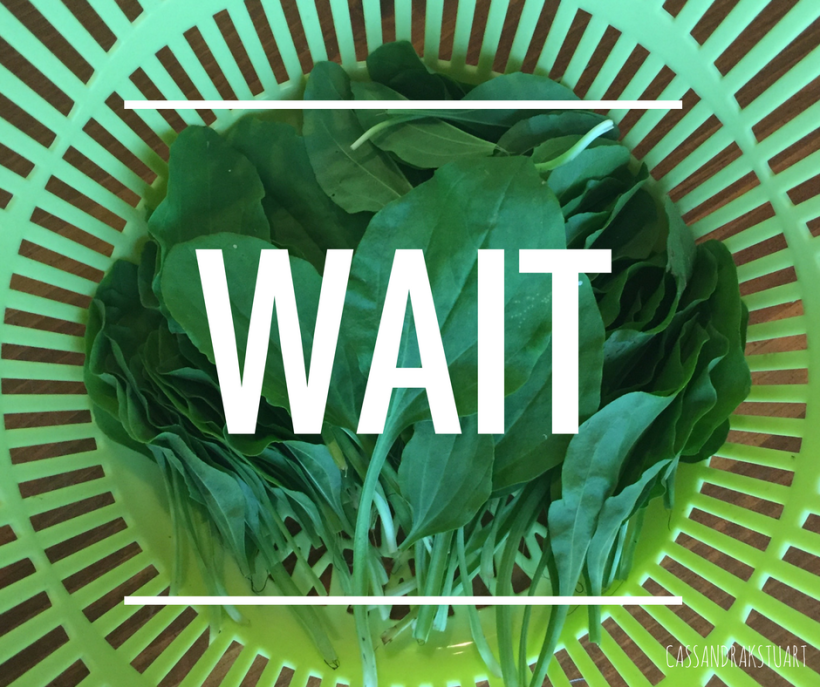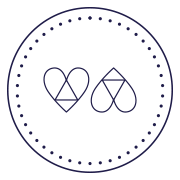
(Plantain infusing in Organic Olive Oil)
Yes, I had the same reaction too when I first learned about plantain. It’s the herb, not the fruit. Plantain, is one of the most common “weeds” in the world with some amazing healing properties, making it a go-to, household remedy for beauty and first aid.
What’s it used for:
- great for bug bites, bee stings, diaper rash
- inflammation and puffy eyes
- soothes dry skin, dandruff, eczema, athlete’s foot
- use instead of antibacterial creams and commercial creams that could contain chemicals and petroleum (the same stuff that’s in your gas)
Where can you find it:
- . Popping up in our yards and well travelled areas, this hearty herb is very adaptable and grows in both sun and shade.
How to use it (there are several ways, here are a few):
- Plantain infused Apple Cider Vinegar (ACV): great to add to your bath to soothe itchy skin, as a foot bath to soothe Athlete’s foot or as a hair-rinse for dandruff
- Plantain infused olive oil + beeswax to make salves and healing balms
- Coconut oil + plantain infused olive oil + shea butter to make a whipped body butter
- Eat raw in salads as a great spinach substitute
Steps for harvesting:

There are 2 different types of plantain, Plantago major and Plantago minor. This photo features Plantago major.
- spiked flowers that shoot straight up from the middle of the plant
- oval-shaped, broad leaves (Plantago minor has long narrow leaves)
- longitudinal veins

If you’re not sure, pick a leaf, lay it flat on the palm of your hand so that the stem faces your wrist and the top of the leaf faces your fingertips. Check to see if the veins run parallel to your fingers (up and down).

- Leaves can be harvested anytime of year from early Spring until frost
- Harvest the young, tender leaves
- Remember to give thanks when you harvest. It might sound hokey, but it’s a nice way to give back to Mother Nature – she gives you nourishment, you give her thanks (sounds pretty good to me).
I like to harvest about 100 leaves, it makes for a good amount of dried plant in my infusion jars, not too much and not too little. When you first discover an herb, it’s easy to get excited and greedy. Just for fun, I harvest 108 because it’s a sacred number in the Hindu tradition.
 Wash your harvested plants in a combination of water and apple cider vinegar (about 1 cup water: 1 tbsp ACV). In this plantain bath I used about 4 cups water and 4 tbsp ACV and let the leaves soak for about 5 min, swishing them around every once in a while.
Wash your harvested plants in a combination of water and apple cider vinegar (about 1 cup water: 1 tbsp ACV). In this plantain bath I used about 4 cups water and 4 tbsp ACV and let the leaves soak for about 5 min, swishing them around every once in a while.

Spin a few times until most of the water is off. If you don’t have a spinner, lay the leaves flat (see below) and blot the leaves with a clean tea towel.

Try to lay the leaves down so that they’re not overlapping. This can be a practice of patience to handle the delicate leaves, but I like to think of it as my time to infuse good intentions into each individual leaf.

It takes about 4-5 days for the leaves to dry. Drying the leaves helps to prevent rancidity if you’re using it in an oil infusion (remember, oil and water don’t mix.)
The beauty of working with herbs is honouring the process. Everything takes time and it’s so worth the wait.
*These thoughts are expressed from personal experience and are not intended to treat or diagnose any specific condition.

